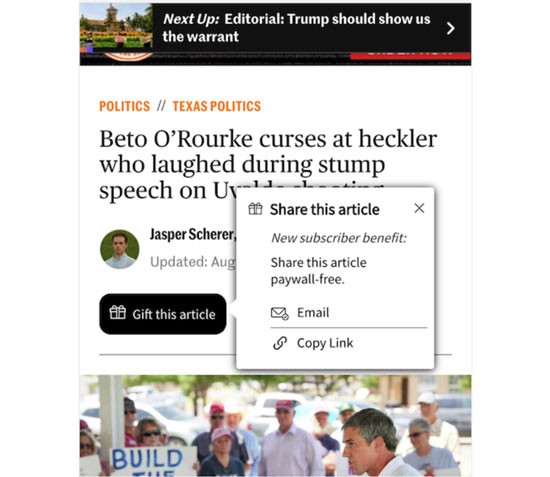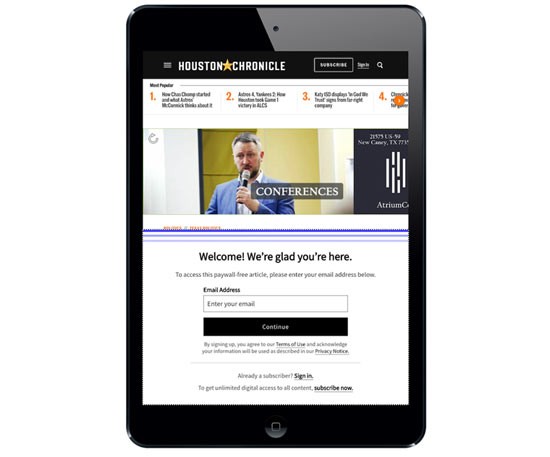Letting friends and family access an article a reader has found interesting can bring a pay-off for the publisher.
It’s the second “wrinkle” that makes the difference, according to Hearst Newspapers director for product management, subscriptions, Ryan Nakashima.
“In the past couple of years, several newspaper publications with paywalls have given subscribers a new benefit: They allowed them to share articles with friends and family for free,” he says in an INMA product and tech blog.
“At Hearst Newspapers, we added a second wrinkle: requiring anonymous gift recipients to register an e-mail address to redeem the article view.”
He says the hope was that this would result in a “two-fer” – creating an uplift to both retention and acquisition efforts – and while long term impact is still being studied – preliminary results have been so positive that they have moved from a test on HoustonChronicle.com to rolling the idea out to subscribers on the biggest sites, including SFChronicle.com in San Francisco; ExpressNews.com in San Antonio, Texas; and TimesUnion.com in Albany, New York, with more to come.

First, there was a nine per cent stop churn reduction among subscribers that saw the article gifting benefit versus those who didn’t. “While it’s not totally clear whether the mechanics of using the benefit helped or simply knowing of its existence did, that alone was an eye-popping number.
“Ask any retention executive at your companies if they would like to reduce churn by nine per cent and I think you will get an enthusiastic response.”
Nakashima says there were other indications subscribers were stoked to receive this benefit. “In a survey of our subscribers last March, the ability to share articles with friends or family was the most requested feature benefit. And when we sent an email to subscribers touting its availability, more than half read the email, an astonishingly high read rate for any e-mail campaign.”

The second element of the feature was just as exciting: When gift recipients went to view the article sent by their friend or significant other, about 20 per cent provided an email address when asked.
“That is more than triple the email provision rate when we tested imposing a registration step on visitors who have exceeded their monthly allotment of free article views,” Nakashima says.
“Think about it: When someone you care about sends you an article they think you should read, don’t you want to find out what they’re talking about (even if you have to provide an email address to do so)?
“Approximately 20 per cent of the people who are prompted to provide an email address willingly do so.
Approximately 20% of the people who are prompted to provide an e-mail address willingly do so. Conversely, as marketers, it’s great to be able to target people in the close circle around existing subscribers who’ve already declared their devotion to local news by paying for their own subscription.”
Nakashima says the other thing that happens when gift recipients provide an email address is they get added to email lists for promotional subscription offers. “From this mechanism, not only do we have 17,000 new email addresses from these four markets, but in the market where this went out the earliest, the downstream conversion rate to paid among certain cohorts has already reached one per cent.
“While that may not seem like a ton of emails to have acquired for a company of Hearst Newspapers’ size, the great thing about a product like this is it has a set-it-and-forget it aspect, where the mechanism is at work even while we sleep.
“For Hearst Newspapers, it’s one great example of product-led growth, where a new feature can act as its own marketing channel, reducing the cost of acquisition of new leads and tapping into adjacent target audiences as we all try to figure out where the next growth opportunity is.
















Comments